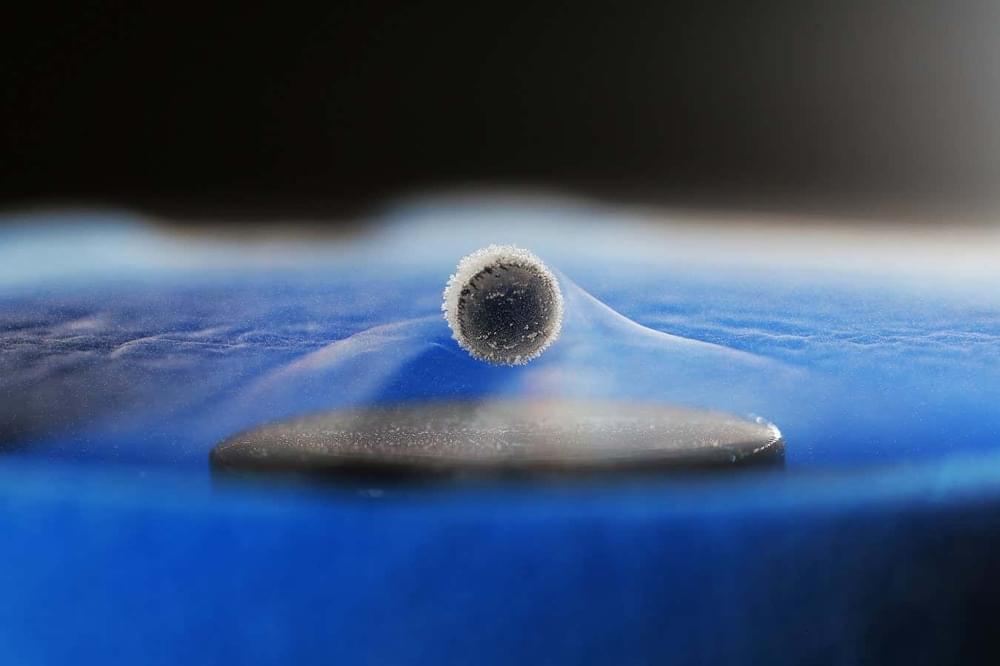Uisng a nonstandard experimental technique, physicists confirm 67-year-old prediction of massless, neutral composite particle called demon.




The “wobble” of a tiny particle known as a muon is once again challenging our understanding of physics and could be the start of a major discovery, scientists have said.
For the third time, findings from experiments have shown this particle does not behave as predicted by the Standard Model – the rulebook physicists use to describe and understand how the universe works at the subatomic level.
Scientists said their latest results, which have been submitted to the journal Physical Review Letters, reinforce measurements of the muon’s wobble in previous experiments and are even more precise.


An experiment at Fermilab in the US suggests that muons rotate faster than expected, which would be a problem for the standard model of particle physics.
By Leah Crane

A particle called Pines’s demon has been seen inside a superconductor, decades after it was first predicted.
By Alex Wilkins


😗😁Year 2015
(12 Apr 1997) English/Nat.
British and Dutch scientists using a giant magnetic field have made a frog float in mid-air, and might even be able to do the same thing with a human being.
The team from Britain’s University of Nottingham and the University of Nijmegen in the Netherlands has also succeeded in levitating plants, grasshoppers and fish.
Scientists at the University of Nijmegen in Holland have managed to make a frog float six feet (approximately two metres) in the air — and they say the trick could easily be repeated with a human.
The secret is not magic but a powerful magnetic field which overcomes the force of gravity.
The field makes the frog’s atoms generate a weak magnetic force in the opposite direction.
This causes it to be repelled in the same way as like poles of two magnets.
Plants, grasshoppers and fish have been levitated by the research team in the same way.
NASA, apparently, is extremely interested in the experiment in order to be able to test the effects of weightlessness on astronauts without having to put them into space.
Easy, says team leader Dr Andre Geim.
SOUNDBITE: (English)
There is no problem with putting a man by this magnetic levitation, to fly in the air. Technically we can do it with you without any problems.
SUPER CAPTION: Dr Andre Geim, Director of the High Field Magnetic Laboratory of the Catholic University of Nijmegen.
And for those worried about the effects on the frog — don’t worry.
He’s not hopping mad — quite the opposite, in fact.
Find out more about AP Archive: http://www.aparchive.com/HowWeWork.
Twitter: https://twitter.com/AP_Archive.
Facebook: https://www.facebook.com/APArchives
Instagram: https://www.instagram.com/APNews/
#frog #float.
You can license this story through AP Archive: http://www.aparchive.com/metadata/youtube/f760c710bc6ebc4556bfd7fb75d70404
All this and stamp collecting?paraphrase Lord Kelvin.
If you’d like to learn more about quantum mechanics, use our link https://brilliant.org/sabine — You can get started for free, and the first 200 will get 20% off the annual premium subscription.
Correction to what I say at 14:22 — The KATRIN experiment does not look for neutrinoless double beta decay, it’s trying to measure the absolute neutrino masses. There are several other experiments looking for neutrinoless double beta decay. Sorry about that mixup!
Some physicists are claiming that there is something “wrong” with our understanding of the universe. Oftentimes, it’s just to justify asking for funding for new experiments, a better detector, a new telescope, a bigger collider, but what if there’s something more than that? Do we have evidence of new physics? Or not? In this video, we will look at dark matter and dark energy, quantum gravity, the mass of the Higgs-boson, neutrino masses, and the matter-antimatter asymmetry.
💌 Support us on Donatebox ➜ https://donorbox.org/swtg.